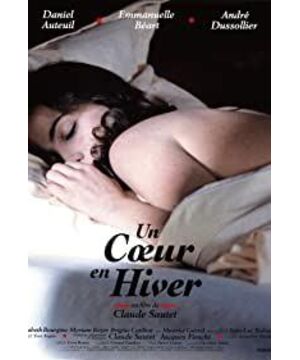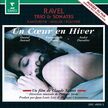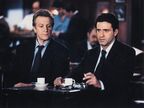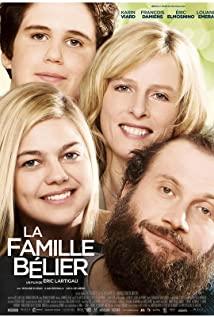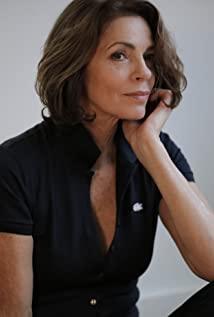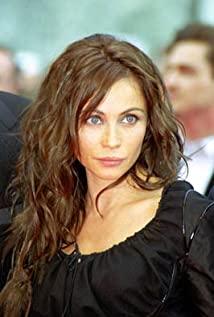The following is the speaker’s analysis of the music in the film: both
the opening and the end of the film use the first theme of the first movement of Ravel’s trio in A minor, beginning with Steven’s loneliness in the crowd and ending with Camille Reluctant eyes. This theme is the theme of folk dance music. It is quiet and light. It is led by the piano, then the ensemble on the violin, and then develops into an impassioned sound. The second theme of this movement is also useful in the film, a section played by the band after Steven finds Camille to tune the piano. This theme has a temperament similar to the first theme. It is played lightly by the violin and followed by the cello. At this time, the relationship between the two has just begun, and the music is warm and peaceful, which is particularly appropriate here.
The second movement (scherzo) of this trio was used in the second studio scene. Camille had just been ignored by Steven and his emotional future was uncertain, so his performance was extremely difficult, Emmanuel Bay. Ah interprets this kind of restless mood very meticulously.
Ravel wrote this trio at the age of 39 (1914). At that time, France was in the period of general mobilization before World War I. The author was away from the summer heat in his hometown. After finishing this song, he was drafted into the army. On the whole, the Spanish style of this piece is obvious. The first two movements are relaxed, and the third movement "Passacaglia" is heavy. We can hear it in the movie "Birdman".
Ravel's violin sonata is used most in the film. The first thing I heard was the first movement of the violin and cello sonata (Allegro). After the piano was repaired, Steven and Maxim and others were listening to Camille and the cello. Camille was watching Steven’s gaze. Unable to complete the performance, Steven left quietly after being aware of it. The actor's performance was delicate and very tasteful. Although the speed mark of this song is fast, the melody is exquisite, which just reflects the delicacy of Camille's mind. This sonata was composed in 1922 in memory of Debussy who had just passed away. It is a fine selection of sonatas for violin and cello.
Another violin sonata is his famous G major violin and piano sonata, the second movement (BLUES) and the third movement, which appeared in Camille's other two recording studio scenes. The second movement starts with the pizzicato of the violin, the blues melody appears, and the piano imitates the pizzicato of the double bass in the low range. This movement is supposed to be in the form of minuet or scherzo, but here under the violin plucking, the piano plays a blue-toned tone, both in scale and decorative sound, and it is here by Rawai Er design is more artistic. Although it is not a real BLUES (the instrument configuration is different, and real jazz requires improvisation), it has surpassed the real BLUES. It was through this piece that Camille expressed his passion for Steven. Steven just listened quietly to her performance, and then the two drank coffee together in the rain, which is probably the most romantic part of the whole film.
The scene of the second recording is the third movement. Both instruments are performing dazzlingly. The unusual rhythm and rhythm design increase the difficulty of performance and coordination, but it also brings more to this movement. Fun, ending with an active bow and a warm tone. At this time in the movie, the two are already deeply entangled. Camille has also publicly expressed his admiration for Steven. Steven, who has been evasive, watched Camille’s recordings through Maxim’s matchmaking. Under Wen's gaze, Camille had an illusion about Steven's feelings. She played this movement with passion. Her feelings reached the climax and she was not prepared for the next heavy blow.
Ravel’s violin sonata in G major is completely different from his earlier works. It was completed when he was 52 years old (1927). American jazz began to influence the world. In this work, the form and tone of jazz can be used for Ravi Influenced by Er, he tried to mix jazz elements and tonal musical vocabulary in his serious artistic creation. We can also find this jazz element in his left-hand piano concerto. In 1928, he started performing and traveling in the United States for four months, listening to jazz with Gershwin, having dinner with Chaplin, and conducting performances in 25 cities earned him 27,000 US dollars. Spend your old age. Ravel, a humble music teacher who has lived in a single life, is not like Steven, but he still has his cat companion.
The last piece to be mentioned is the fourth movement rapid board (PRESTO) of the first sonata of Bach's a cappella sonata and suite, which was played by an old man who asked Steven to repair the piano. This set of pieces is the bible of a cappella sonata. After Bach, few people re-created a cappella sonata for violin, because the peak can no longer be surpassed. The other sonatas seen in the film are accompanied by accompaniment.
As the movie said, "Music may be a dream."
View more about Un Coeur en Hiver reviews


